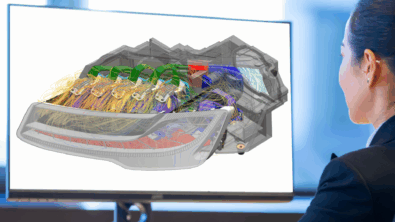Ray Acoustics Modeling: Exploring Performance in the Full Frequency Range
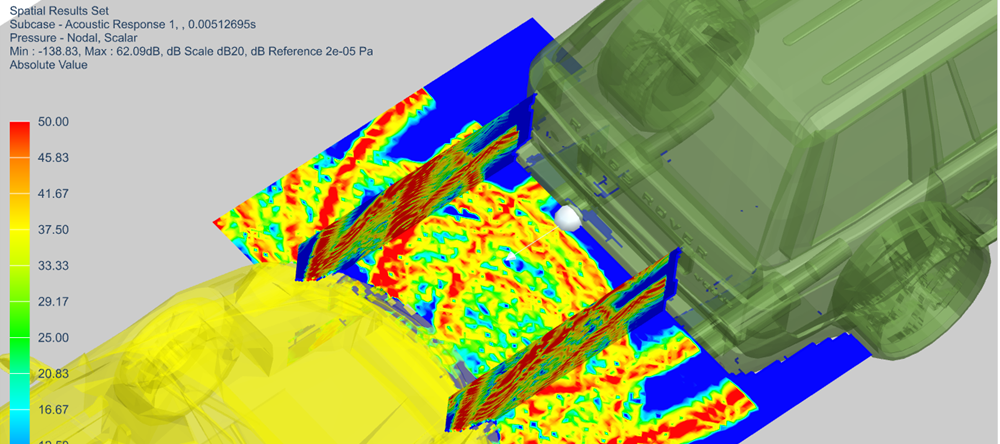
Predicting the acoustic response for a large volume in the audio range or around a big geometry (airplanes, cars or even a city!) is prohibitive from a computational point of view using classic Finite Element Method (FEM) or Boundary Element Method (BEM). They require extensive mesh refinements to capture higher frequencies — this will quickly increase the model size. Ray acoustics modeling makes exploring performance in such scenarios feasible.
What is Ray Acoustics Modeling?
Ray Acoustics technology solves this issue by enabling simulations in very large geometries or high frequencies by assuming that the sound propagates along rays. Technically, this assumption is valid at high Helmholtz number (He = 2πL/λ)
Or in other words:
- Large geometries or environments (L, being the characteristic length of our geometry) and
- Relatively high frequencies (λ, being the wavelength, which decreases with frequency)
Ray Acoustics Modeling belongs to the so-called geometrical acoustics solutions. These solutions are very powerful because, as opposed to FEM or BEM solutions, their performance and accuracy is not mesh dependent. This means that the mesh should only capture the geometry, independently of the frequency we want to solve for. In addition, the geometrical solution is frequency independent which allows to extrapolate the results up to very high frequencies without substantially increasing the computational effort. This makes the solution orders of magnitude faster.
Simcenter 3D: Ray Acoustics Modeling
The Simcenter 3D Ray Acoustics solution (introduced earlier this year) integrates an engineering environment in Simcenter 3D to generate and post-process a ray acoustic model. The ray acoustic solver is the ICARE solver from CSTB. This complements the FEM and BEM acoustics solvers in Simcenter 3D environments allowing to simulate acoustic problems in the full frequency range in the same environment.
Simcenter 3D Ray Acoustics includes three key innovations to help you simulate acoustic propagation in an accurate way either in interior or exterior problems:
- Adaptive beam tracing
- Multi-order diffraction
- Particle tracing
Adaptive Beam Tracing
Firstly, adaptive beam tracing propagates wave fronts as triangular beams instead of thin rays. These beams reflect on the walls and automatically split into smaller beams if an edge is struck. This allows to more accurately capture the specular reflections.

Automatic triangular beam splitting when hitting a surface
An important side effect of this technology is that it allows to accurately capture the reflection on curved surfaces.
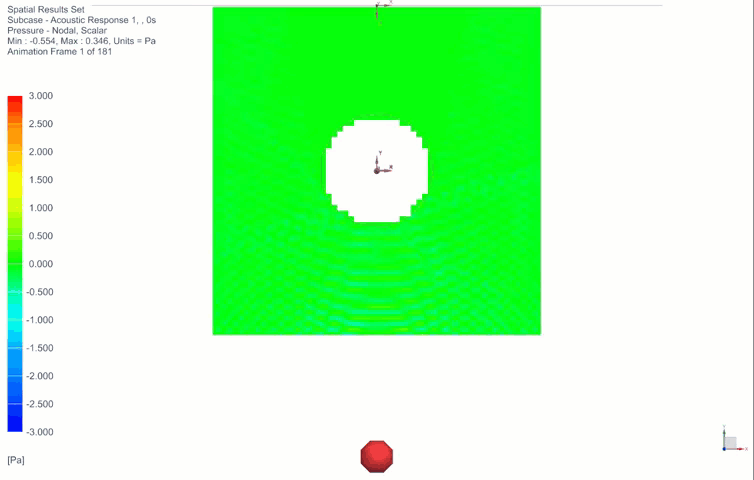
Acoustic waves reflecting on a discretized cylinder. The reflected wave front is split because of the discontinuity of the surface
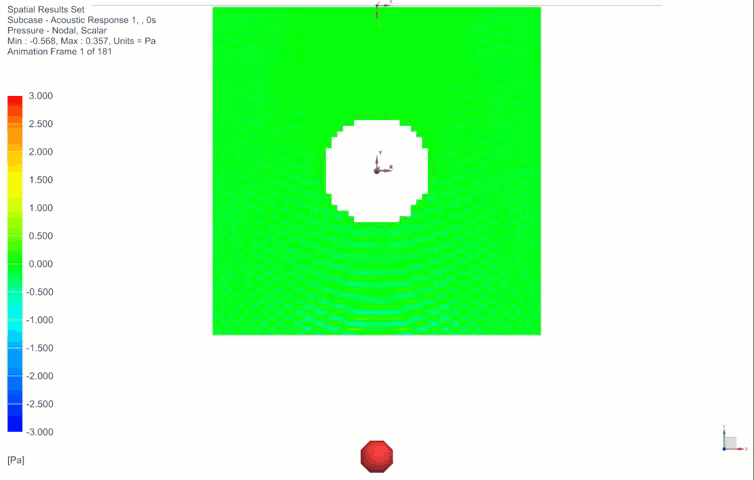
The same acoustic problem as above using “smooth surface” functionality captures correctly the continuous reflected wave front. No diffraction effects are taken into account
Multi-order Diffraction
Beams can also be diffracted. Simcenter 3D Ray Acoustics supports multi-order diffraction at sharp edges but also in curved surfaces. This allows capturing creeping waves bending around a curved surface.
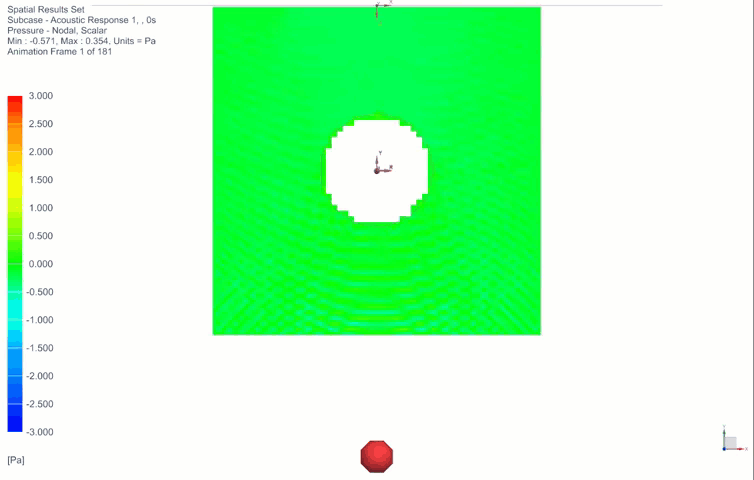
Example of creeping waves around a cylinder. This is the same acoustic problem as above however taking diffraction into account.
Particle Tracing
Finally, the particle tracing solver can be used to add information about late reflections and capture the effect of diffuse reflections. Whereas a part of an impinging sound wave is reflected specularly (like a mirror) when hitting a wall, a part of it is also reflected in diffuse fashion, with the reflected sound going in all directions. This is due to the fact that most surfaces are not perfectly smooth like a mirror surface. This is of particular importance in closed and reverberant environments where an impulse response will live for a relatively long time. (Or as we commonly say, will have some echo). As opposed to standard statistical methods, which only approximate the effect of late and diffusive reflections based on Sabine’s law [X], particle tracing allows to account for the actual shape of the environment and the non-uniform distribution of diffusely reflecting surfaces.
Ray Acoustics Modeling can be applied to virtually any industry. Let’s look at a few application examples.
Ray Acoustics Modeling in Aircraft Ramp Noise
When an aircraft is being handled on the ground, it is subjected to strict international regulations about the noise levels radiated in the airport. Given the large scale of the aircraft and that the noise regulations should be ensured across the full audible range, this problem is untackable from a computational point of view with BEM or FEM technologies. On top of the scale, the curved nature of an aircraft geometry increases the complexity since diffraction around it will have a dominant role. As shown below, creeping waves will be propagated around the fuselage which is a challenge for many geometrical acoustic solutions.
Simcenter 3D Ray Acoustics is able to capture the waves creeping around the fuselage and even to reflect further those diffracted rays.
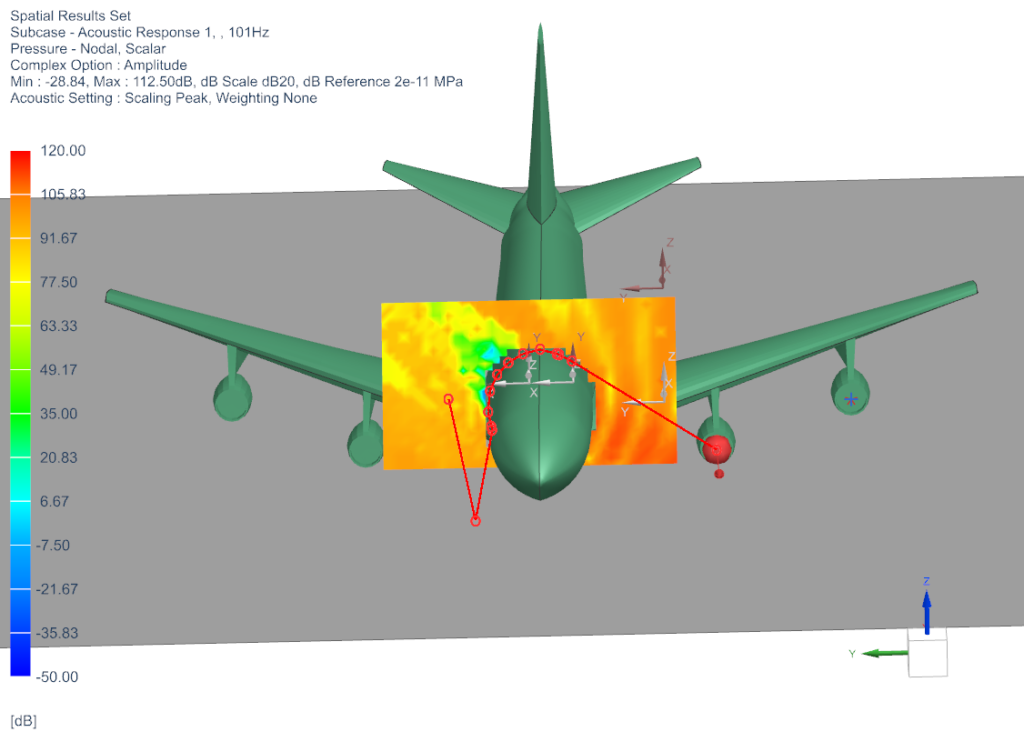
Using ray acoustics modeling to predict noise propagation around an aircraft fuselage.
Ray Acoustics Modeling in Room Acoustics & Auditoriums
Another area where acoustics is a critical aspect when designing is an auditorium or a concert hall. The shape of the room and building materials have a huge impact on the sound quality.
Combining beam tracing and particle tracing solutions you can accurately predict the acoustic behavior of the room. Simcenter 3D Ray Acoustics offers the possibility to compute common sound quality criteria such as:
- Reverberant time
- Clarity Criterion (C80)
- Speech Definition (D50)
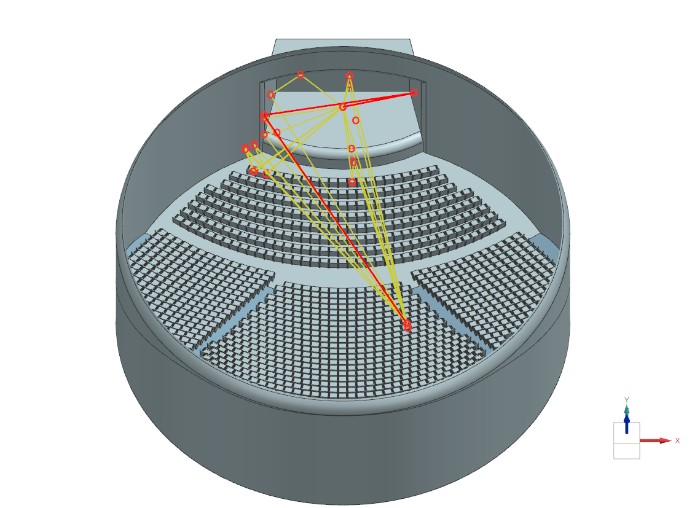
Side View – Acoustic simulation of a concert hall
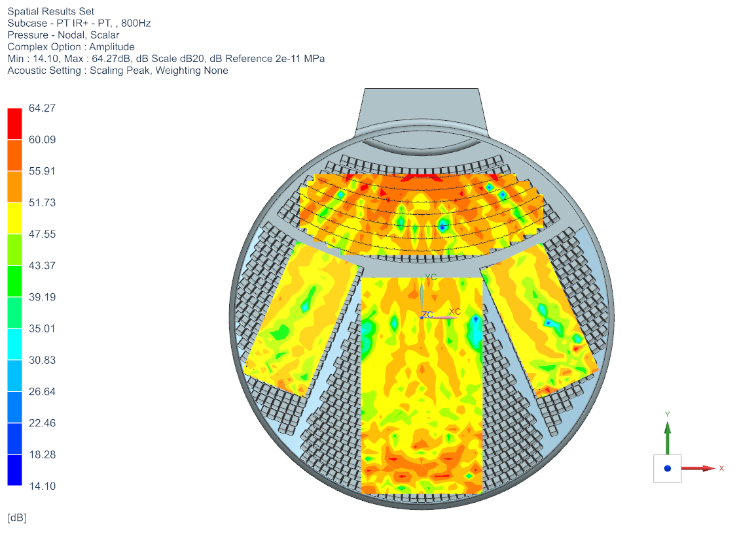
Top View – Acoustic simulation of a concert hall
Ray Acoustics Modeling in Advanced Driving Assistance Systems (ADAS) and Acoustic Vehicle Alerting Systems (AVAS)
Advanced Driving Assistance Systems (ADAS) are a key differentiator in the automotive sector. Some of these systems are based on audible sound, such as the electric vehicle warning sound. Others are in ultra sound technology, like parking sensors.
Ultrasonic sensors typically have dominant frequency between 25kHz and 50 kHz and the waves have to travel a few meters. With the toolset available in Simcenter 3D, you can simulate the directionality pattern of the actuator using FEM or BEM and propagate the pulse to accurately capture the reflections in the complex surfaces with Ray Acoustics Modeling.
Top view of a time-domain propagation of an ultrasonic parking sensor
Side view of a time-domain propagation of an ultrasonic parking sensor

